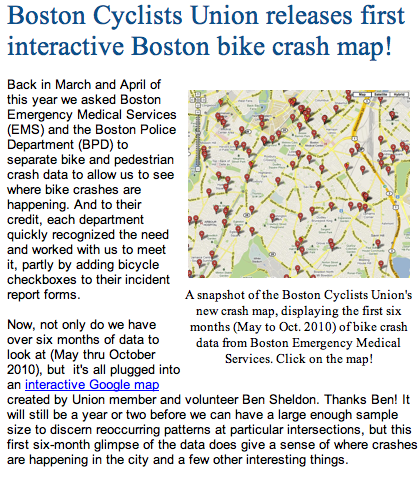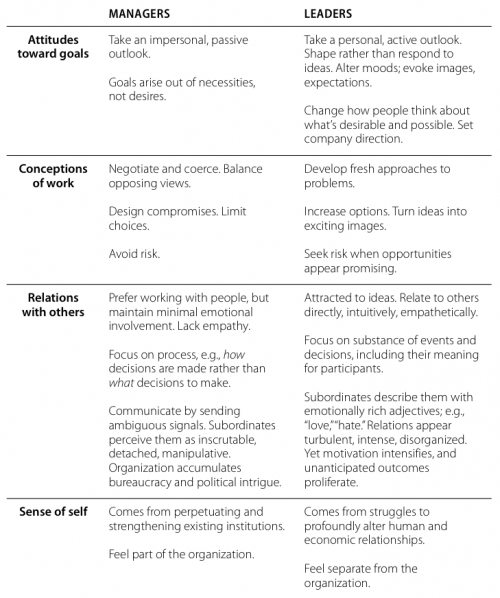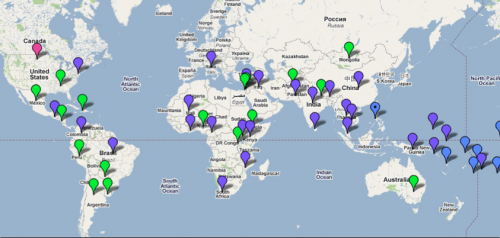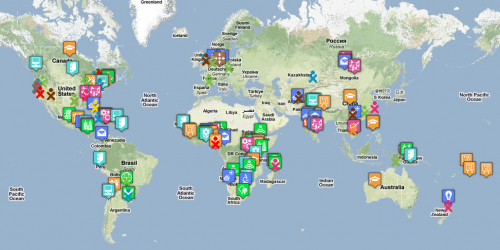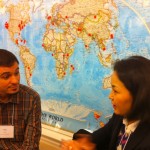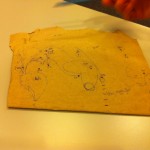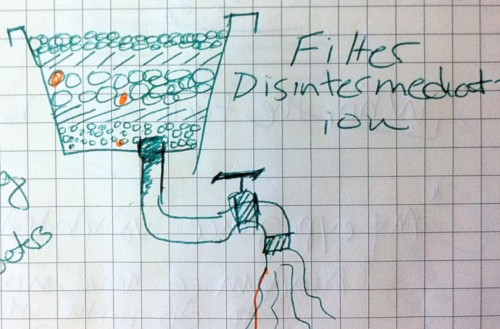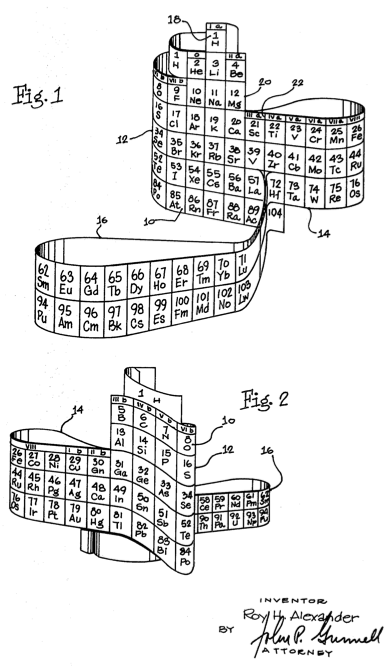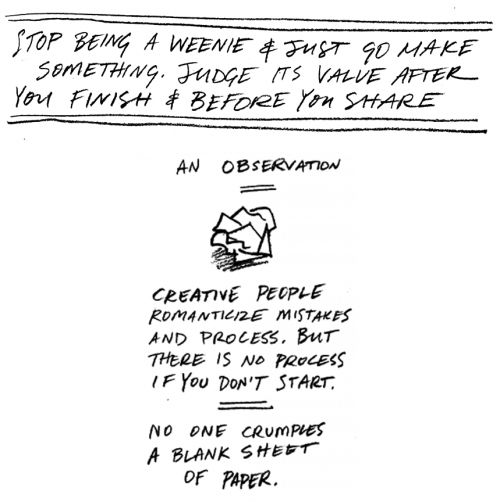I quote a lot on this blog from other places, so I wanted to post something I’ve written. I’m Program Director of the Transmission Project’s Digital Arts Service Corps: we recruit and place yearlong, full-time, stipended volunteers in support of capacity-building projects at nonprofit organizations that use media and technology to strengthen communities. We’ve placed more than 400 Corps members at 170 organizations in 30 states. We’re kind’ve awesome.
This briefing is from last Spring, in response to a key government stakeholder asking us to justify our continued relevance after 10 years in the field:
The Transmission Project (before, the CTC VISTA Project) has focused on the Digital Divide in America since its inception. Although this divide continues to exist, its nature has become more complex. No longer are we just concerned about an individual’s access to a computer; other factors such as broadband adoption and the digital participation gap can now have direct impact on a person’s ability to change their socioeconomic status. Enabling individuals and communities to emerge from poverty today relies even more upon their ability to participate in the production and sharing of information through media and technology.
The role information, media and technology play in economic development is well-recognized within government programs. The Federal Communication Commission (FCC) project on the Future of Media and the Information Needs of Communities identifies both “the role of public and other noncommercial media in serving the information needs of the underserved, including language minorities, ethnic minorities, children, the disabled, and the economically disadvantaged” and “the infrastructure needs and assets of public and other noncommercial media in delivering information to communities” as areas for development.
Supporting media and technology is a key activity of social and economic development. Grantmakers in Film + Electronic Media’s (GFEM) newly released report “Funding Media, Strengthening Democracy: Grantmaking for the 21st Century” pushes for acknowledgement of the prevalence and impact of media: “Foundations and government agencies of all sizes and in all fields will benefit from recognizing the growing importance of media to the future of every field—education, health, the environment, and more.”
Recent economic stimulus measures recognize the economic benefits of investment in communications programs and infrastructure. The American Recovery and Reinvestment Act’s Broadband Technologies Opportunities Program, (BTOP) seeks to “expand broadband access to unserved and underserved communities across the U.S., increase jobs, spur investments in technology and infrastructure, and provide long-term economic benefits.” BTOP funded programs and organizations are a priority area for the Transmission Project in our 2010-2011 program year.
The FCC’s National Broadband Plan goes so far as to recommend a new Corporation for National and Community Service (CNCS) initiative, a Digital Literacy Corps, which would “help people get connected—not only to broadband—but to the educational and economic resources that broadband can bring to the next generation of Americans.” Such an initiative would mirror the impact of capacity building and organizational development the Transmission Project has supported over its 10 year history.
But broadband should not be the only focus of development. The FCC also encourages “innovative uses of social media, gaming, Internet applications, citizen journalism, mobile technologies, and other technological and organizational innovations and the possibilities for new kinds of noncommercial media networks” as solutions to the information needs of communities—areas in which the Transmission Project has long-focused.
Capacity building in media organizations takes on a variety of roles. The report “Fighting Poverty: Utilizing Community Media in a Digital Age” includes the World Congress on Communication for Development recommendation that development institutions should provide assistance to build the capacity of community media through training, strengthening of networks and sector associations, technical assistance and investment in order to result in community media’s contribution to long term social change.
The capacity-building needs of media organizations echo the needs identified by the CNCS’s own stakeholder dialogues on capacity building in nonprofits: “The most critical capacity building issues facing small and midsize nonprofits right now are sustainability (cash flow and consistent funding, particularly for infrastructure), leadership, ability to nurture partnerships and relationships, capacity to manage and retain volunteers, weak understanding of the role of governance, short-term thinking and stagnation, capacity to use technology, and capacity to manage and cultivate human capital, both paid and volunteer.”
The Transmission Project, with the support of CNCS, has long recognized the need for capacity building within organizations that use media and technology and the positive impact those organizations and their initiatives can have upon individuals and communities in poverty. The information needs of communities, and the role public media and technology has in meeting those needs, are ever more relevant and necessary today as they were 10 years ago.
There are a few turns of phrase that make me cringe—not to mention reliance on the comma—but overall I am very proud of this writing. It was a quick, 2-day turnaround project that relied heavily upon recent reports and studies we had previously quoted on the Transmission Project’s blog. We never received a formal response, so I assume it was effective.
